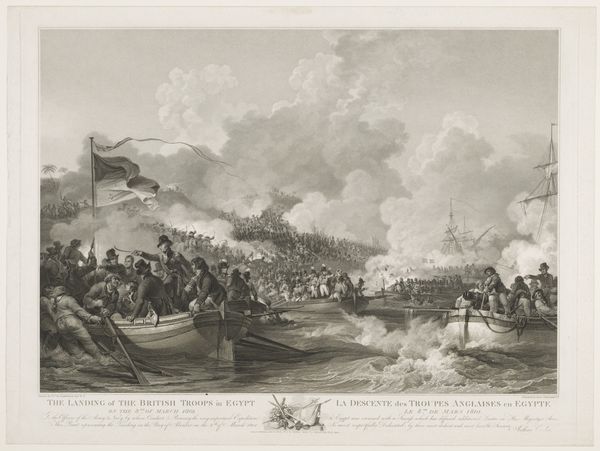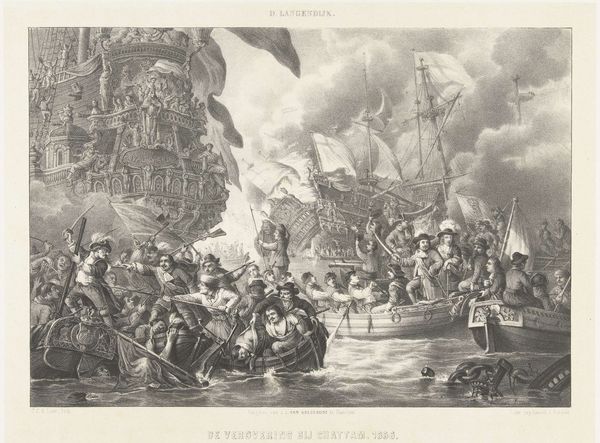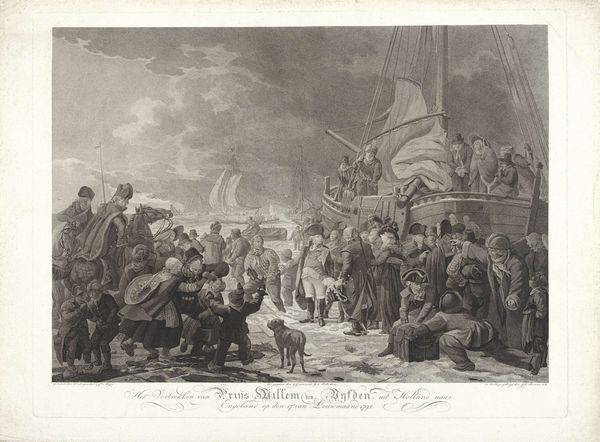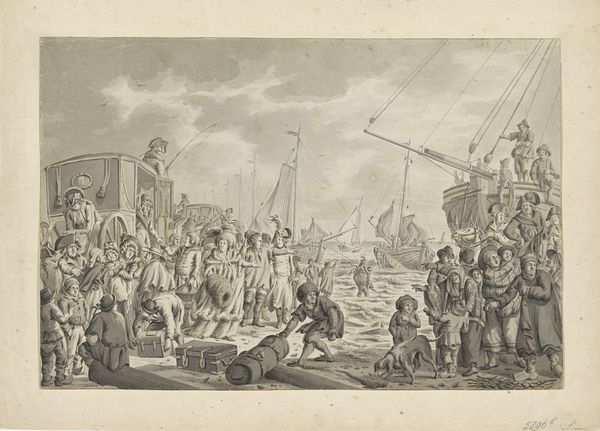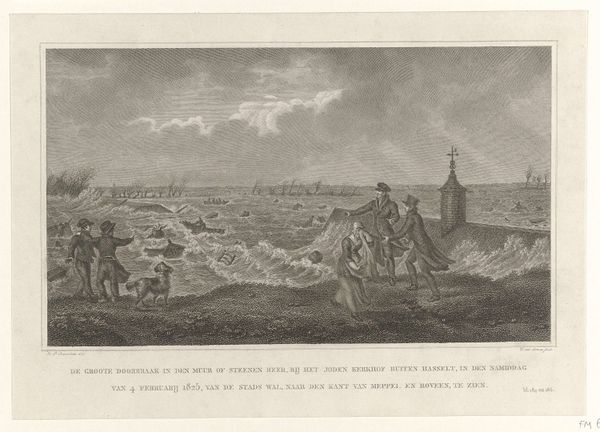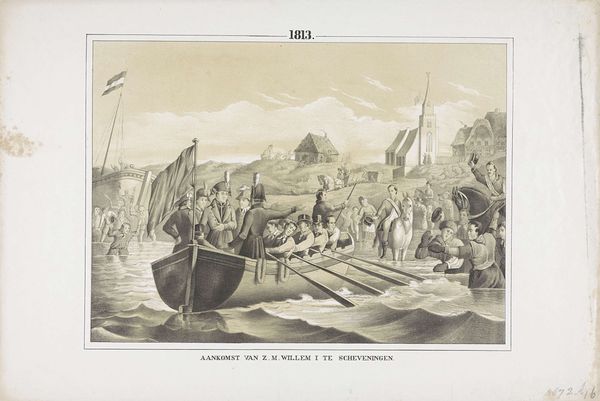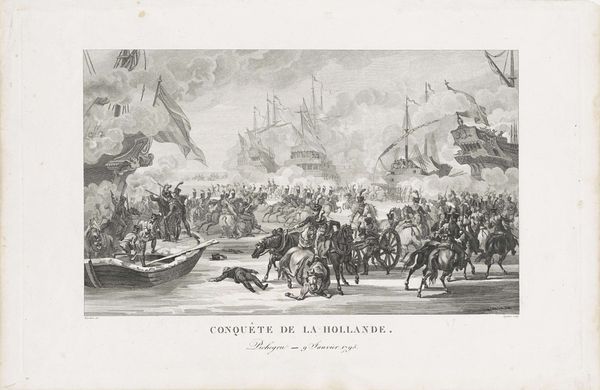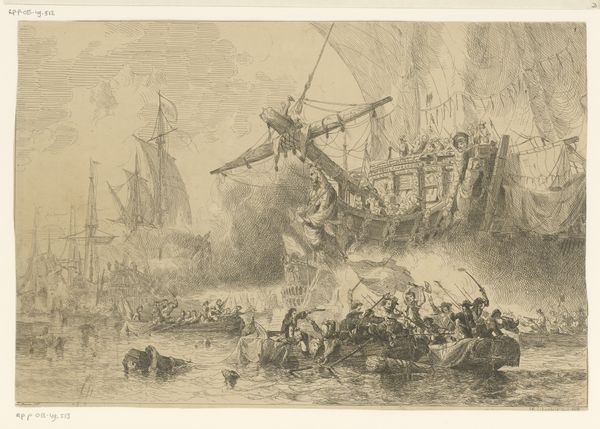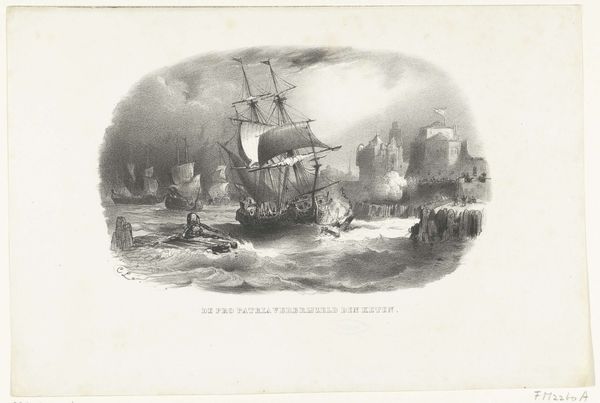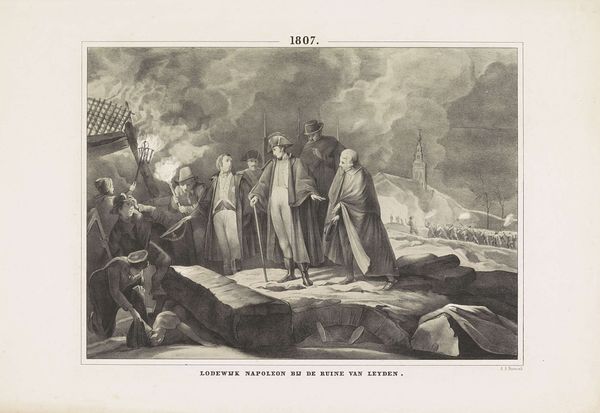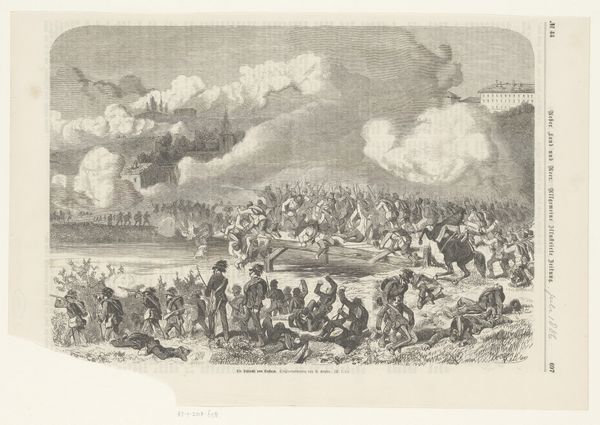
De Tocht naar Chatham en de verovering van de Royal Charles, 1667 1853 - 1855
0:00
0:00
anonymous
Rijksmuseum
Dimensions: height 349 mm, width 515 mm
Copyright: Rijks Museum: Open Domain
Curator: The artwork we're observing is an engraving created between 1853 and 1855 titled "De Tocht naar Chatham en de verovering van de Royal Charles, 1667," which translates to "The Raid on Chatham and the capture of the Royal Charles, 1667." Editor: Immediately, the composition strikes me. The use of detail to evoke the grand scale of the naval battle is well done, especially rendered entirely in monochromatic tones. Curator: Indeed, the artist's skilled employment of line work certainly emphasizes the visual intensity. The Baroque aesthetic contributes to this sense of grand spectacle; note the way the artist creates depth by layering ships and figures. What message do you derive from the image's historical narrative? Editor: I view it as a reflection of national pride, intended for public consumption to both memorialize and celebrate Dutch maritime supremacy, even if this print emerged nearly two centuries later. What do you make of the artist’s choice of medium? Curator: I am curious to note the printmaking methodology. The finely etched lines achieve a stark contrast and enable detailed replication, ensuring it’s accessible and can circulate among a broader demographic than painting, perhaps making it a political tool as much as a piece of commemorative artwork. Semiotically, observe the visual cues: the triumphant expressions and gestures within the vessels imply domination and victory. Editor: This all makes sense. Its presence here at the Rijksmuseum signifies its lasting legacy as a testament to national identity, reflecting changing societal attitudes toward Dutch history across generations. Curator: Through structural analysis, the horizontal arrangement of boats contrasted against the vertical masts offers a balance indicative of a narrative’s controlled interpretation of historic occasions, and therefore the print achieves an equilibrium within itself. Editor: Considering its public role then and now allows one to acknowledge how image politics intersect with museum presentation to solidify cultural stories over extended periods. It emphasizes how visual mediums affect and are affected by social context. Curator: Analyzing from these different vantage points provides us both a way of understanding historical representation and understanding the intricate craftsmanship inherent in this visual testament. Editor: Indeed, it shows how a deep appreciation can develop from methodically analyzing social resonance coupled with attention to detail.
Comments
No comments
Be the first to comment and join the conversation on the ultimate creative platform.
